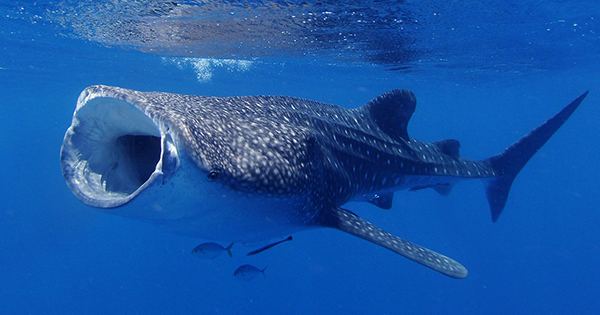The Greenland shark (Somniosus microcephalus), also known as the gurry shark, grey shark, or eqalussuaq in Kalaallisut, is a member of the sleeper shark family Somniosidae (order Squaliformes, which also contains the dogfish family Squalidae) and the world’s longest-living vertebrate. It is a huge shark belonging to the Somniosidae (“sleeper sharks”) family, and it is closely related to the Pacific and southern sleeper sharks.
The world’s longest-living vertebrate is the Greenland shark. It has a lifespan of 400 years, which is twice that of the world’s oldest land mammal, the giant tortoise. There could be someone in the ocean today who was alive during the Great Plague of London in 1665 and George Washington’s inauguration as president in 1789.
This species’ range is primarily limited to the waters of the North Atlantic Ocean and the Arctic Ocean. The Greenland shark is not only found in Greenland, despite its name. Because this shark, also known as the gray, ground, gurry, or sleeper shark, dwells in extremely cold, deep waters, it has received far less research than many of the more than 500 other shark species.
The species is typically found in the Arctic Ocean and North Atlantic, from Baffin Bay eastward to the Barents Sea, but it also has a range that extends southward to the North Sea and the waters adjacent to the United States’ Eastern Seaboard. It’s also one of the slowest sharks: Somniosus microcephalus, which loosely translates to “sleepy small-head,” is its scientific name. These rare species, however, have the potential to be top predators.
It contains a high concentration of trimethylamine N-oxide in its tissues as an adaption to living at depth, which makes the meat poisonous. Greenland sharks are similar to spiny dogfish (Squalus acanthias), with a rounded head, short fins compared to body size, and gray to brown color. They lack a spine in front of the second dorsal fin, and generally the one on the first dorsal fin.

Many shark species can be identified by counting the growth bands on their vertebrae, similar to tree rings. The soft vertebrae of the Greenland shark, on the other hand, lack these bands. Instead, the age of the animal is determined by removing the layers of its lens, which continues to grow throughout its life, and radiocarbon dating the tissue in the middle.
The Greenland shark can reach a length of 6.4 m (21 ft) and a weight of 1,000 kg (2,200 lb), although it can also reach a length of 7.3 m (24 ft) and a weight of more than 1,400 kg (3,100 lb). Greenland sharks range in length from 2.44 to 4.8 meters (8.0 to 15.7 feet) and weigh up to 400 kg (880 lb). Greenland sharks have a life expectancy of at least 272 years and could live to be 392, give or take 120 years, according to scientists.
However, little is known about how the species reproduces. Males have a lesser stature than females. It is the largest species in the Somniosidae family, rivaling the Pacific sleeper shark (up to 7 m or 23 ft long). Females are assumed to have reached sexual maturity when they reach the 4-meter (13-foot) mark in length, which takes about 150 years.
Because individuals are rarely recovered, measuring the Greenland shark’s growth rate is difficult. When a shark tagged in 1936 resurfaced 16 years later, it had only grown 2.3 inches. With a short, rounded snout, small eyes, and very small dorsal and pectoral fins, the Greenland shark is a thickset species. For a fish of this size, the gill holes are quite small.
They are ovoviviparous (eggs are maintained within the body until they hatch) and produce 10 offspring on average at a time. The type, amount, and length of parental care given to the young remain unknown, but experts believe that Greenland sharks, like other shark species, are self-sufficient from birth.
The shark uses a rolling action of its jaw when dining on huge corpses. The upper jaw’s 48–52 teeth are exceedingly thin and sharp, with no serrations. The top jaw teeth serve as an anchor, while the lower jaw cuts large chunks out of its prey for a quick and simple meal.
The lowest 48–52 teeth are interlocked, large and square, and have short, smooth cusps that point outward. Teeth in the lower jaw’s two halves are sharply pitched in opposite directions. The Greenland shark is the largest fish in the Arctic Ocean and the only shark found there all year. It also lives in the North Atlantic and the Russian high Arctic.
It can dwell in seas 7,200 feet deep and between 28.4 to 44.6 degrees Fahrenheit, yet it is rarely seen at the surface (-2 and 7 degrees Celsius). This shark’s tissues, which have been specially adapted for cold water, contain high levels of chemical compounds that function as anti-freeze, preventing ice crystals from accumulating in the body.
Small Greenland sharks feed primarily squid, whereas larger sharks larger than 200 cm have been seen consuming epibenthic and benthic fishes, as well as seals. These sharks conserve energy by swimming slowly (approximately 1.12 feet per second), but they may also ambush prey with quick bursts of speed.
Humans rarely come into contact with Greenland sharks. Because of their modest pace, Greenland sharks frequently hunt sleeping prey. They may approach prey unseen thanks to their cryptic coloring, then close the gap by exposing their enormous buccal chamber to create a suction that sucks the prey in.
The animal’s meat, on the other hand, is deadly, and eating it can result in diarrhea, vomiting, stumbling, and convulsions, sometimes known as “shark drunk.” To make it safe to eat, the meat must be allowed to rot, then compressed to eliminate harmful fluids before being dried out for months, diced, and served as kæstur hákarl, an Icelandic delicacy.
Greenland sharks aren’t thought to be hazardous to humans, in part because they inhabit in areas where people don’t normally swim; the sole recorded story of a suspected Greenland shark assault on a person comes from 1859. Although such a massive shark could readily swallow a human swimmer, the chilly seas in which it lives make human attacks extremely unlikely, and no confirmed incidents of human predation have been found.
















